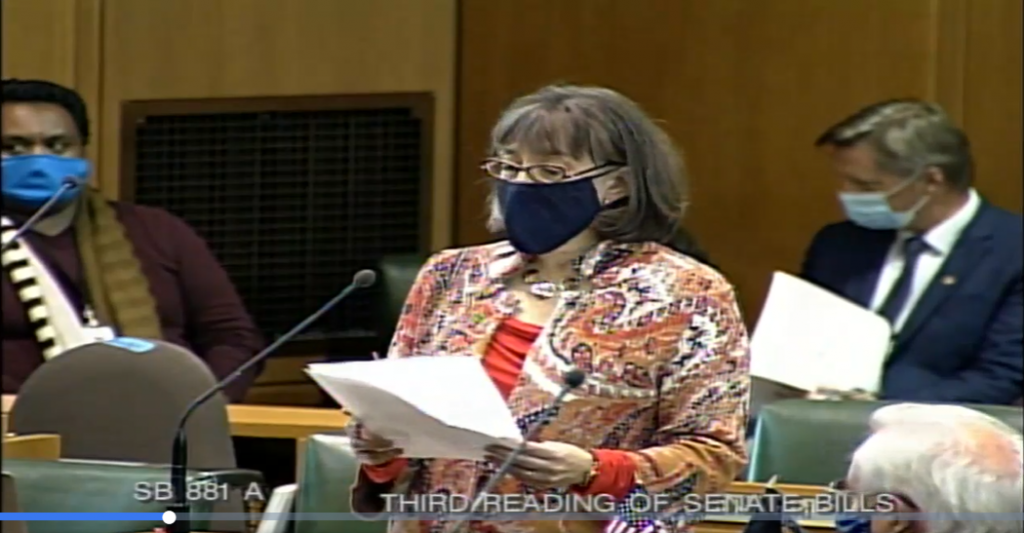NFIB Oregon State Director Anthony Smith reports from the State Capitol
Monday, September 27, marked Day 8 of the first special session of the 81st Oregon Legislative Assembly, but not much had been happening in the Capitol since the first day. That all changed on Day 8, when the Legislature swiftly completed its work and adjourned sine die.
The sole purpose of the special session was to adopt new congressional and legislative district maps based on new population numbers from the 2020 U.S. Census. It’s actually quite rare for the Oregon Legislature to accomplish this task. Just twice (now three times) in the last 100 years has the Legislature successfully passed new maps. More often, the task falls to the Oregon Secretary of State.
This process was a roller coaster ride to watch. Several months ago, the courts granted legislators more time to pass new redistricting plans after the Census data was delayed due to the COVID-19 pandemic – and House Democrats and Republicans made a deal during the 2021 regular session to make the House Committee on Redistricting an even committee, with a Democrat and a Republican sharing the responsibility of chairing the committee.
However, on the first day of the special session, House Speaker Tina Kotek (D-Portland) unexpectedly ended that deal. Over the protests of her Republican colleagues, Kotek split the House Committee on Redistricting into two committees – one to pass a new congressional map and one to pass new state legislative maps. The new House Committee on Congressional Redistricting was not even – the gavel was taken away from Rep. Shelly Boshart Davis (R-Albany) and she was outnumbered on the committee by the chair, Rep. Andrea Salinas (D-Lake Oswego), and Rep. Wlnsvey Campos (D-Aloha).
This action, perceived by House Republicans as a broken promise, was met with fierce opposition and jeopardized the outcome of the session. While House Republicans were deciding whether to participate in the special session (or deny quorum) on Day 2 of the session, Speaker Kotek publicly announced that someone in the Capitol on the first day had tested positive for COVID-19. To give legislators and Capitol staff time to get tested and receive results from those tests, the Speaker cancelled House floor sessions until Saturday, September 25, Day 6 of the special session.
Each House floor session always begins with a first vote to verify the presence of a quorum. On Saturday, that proved to be unachievable. Just 34 members of the chamber were present (40 are necessary to conduct business) with 18 members listed as excused and eight members absent. Most of the missing legislators were Republicans – some unable to attend due to quarantine protocols and some likely uninterested in showing up to allow the Democrats to pass their maps.
Behind the scenes negotiations had been ongoing, and some proposed compromises had been discussed, including a new congressional map that would likely result in four Democrat seats, one Republican seat, and one 50-50 toss-up. Most Republicans expressed opposition to this map because the one competitive district crosses the Cascades to pick up fast-growing and Democrat-leaning communities in Deschutes County. The consensus analysis of this map is that it’s unlikely to stay an even toss-up for long, but it’s the map that legislators moved forward with.
All indications were that the House Republicans would again deny quorum on the last day of the special session (the deadline set by the courts), but that’s not what happened. Although there was still an abnormally large number of members excused from votes, 46 representatives were in attendance – and thus the House was able to conduct business. Based on comments made by several Republicans in floor speeches, it appears as though they are now betting on the courts to challenge the new congressional map.
The Legislature passed the new maps without any procedural hiccups, avoiding a scenario where new state legislative district maps would have been drawn by Secretary of State Shemia Fagan, a Democrat, and the new congressional map would have been created by a panel of five retired judges. Shortly thereafter, Gov. Kate Brown signed both redistricting bills. Now that they have been signed into law it’s probable that there will be a legal challenge (for the congressional map at least, if not the legislative maps as well), so stay tuned for the next chapter in this saga. The political stakes are high – with state and national implications for the next decade.
 State Rep. Andrea Salinas, chairwoman of the House Special Committee on Congressional Redistricting, describes Oregon’s new boundaries. Photo snip courtesy of the Oregon State Legislature website.
State Rep. Andrea Salinas, chairwoman of the House Special Committee on Congressional Redistricting, describes Oregon’s new boundaries. Photo snip courtesy of the Oregon State Legislature website.
